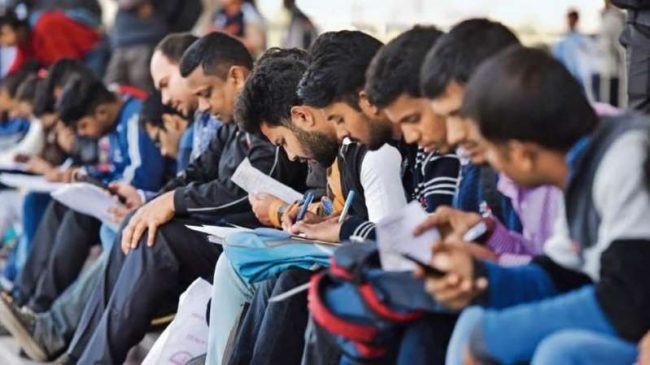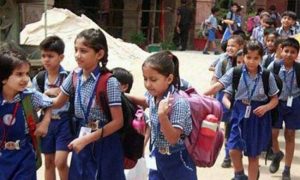Editor’s note: The opinions in this article are the author’s, as published by our content partner, and do not represent the views of MSN or Microsoft
New Delhi: In 2014, the National Democratic Alliance (NDA) government led by Prime Minister Narendra Modi had promised several reforms in education and labour, besides creating a robust environment for employment generation. These are significant issues for a country that has a school- and college-going population of more than 300 million and around 1 million youth entering the labour market every year.
In the last five years, however, most promises remained on paper with little to show in the form of regulatory changes or reforms in labour and education, or a huge leg up to the skills sector.
Cut to 2019, the Modi government returns with a bigger mandate and hopes are high that better implementation of programmes and the much-needed structural reforms will pave way for India’s young demography to be more productive, which in turn will ring in economic prosperity.
“In the first few years of the NDA government, labour reforms got huge attention, work started for merging all central labour laws into four broad codes. The inspection system was reformed, but the reform process slowed down because of several reasons. Now, with a strong government in place there are huge expectations that the reform initiatives will be well implemented this time around,” said Kamal Karanth, a human resource expert and co-founder of staffing firm Xpheno.
“If the Union government is serious about job creation and better productivity of the young workforce, it has to focus on four key areas—solving the liquidity problem of the small and medium enterprises (SMEs), structural labour reforms, faster land acquisition for industries and skill development,” he said.
In the last five years, the authorities were aware that “some reforms were required, but could not be touched because of political compulsions”, Karanth said. “That mindset has to change. Unless the MSME sector is given the required push, we cannot create enough jobs. The demand-supply mismatch in employment can only be taken care of by small and medium businesses, as they are growth oriented,” he asserted.
“Labour reforms is a necessity as it will create an enabling environment for industrial growth and, thus, employment generation. We had done the initial spade work and now, with the kind of mandate they have, it can be done if there is strong political will. It’s a perception battle,” said Shankar Aggarwal, a former secretary at the Union labour ministry. During Aggarwal’s tenure, the labour ministry had started merging all central labour laws into four broad codes, besides reducing instances of inspections in factories. The draft codes are yet to be finalized and will need parliamentary nod to become a law.
Industry needs to have less regulations and compliance norms to work freely, Aggarwal said. The aim is to reduce harassment of entrepreneurs by officers and inspectors. At the same time, authorities will have to ensure that employees are not harassed at the workplace. “It’s a fine balance and need a stronger resolve,” he said, adding that the provident fund and state insurance schemes need to be overhauled to make it more contemporary and employee-friendly.
Quality education will also need urgent attention, as it has a direct bearing on 25% of Indians, besides impacting the economy indirectly, said both Karanth and Aggarwal.
While human resource and labour reforms are essential, the Union government cannot ignore the pipeline that is behind the poor productivity of the workforce. For that, the education sector needs a complete overhaul and better public engagement right from the elementary school level.
“The biggest task in front of the new government will be to increase public investment in education, especially in schools. Unless the government steps in to improve the public school system, the quality of education won’t improve. The accumulation of poor learning over the decades has challenged the country in several ways,” said Kiran Bhatty, senior fellow at policy think tank Centre for Policy Research in New Delhi.
India spends 2.7% of its gross domestic product (GDP) on education. The demand is to increase it to 6% of the GDP. Several studies, including the report by non-profit organization Pratham, highlighted poor education quality in both elementary and secondary levels.
Bhatty said roping in private players will not solve the problem, and government-owned schools must improve their standards. Though the investment in the sector has grown gradually, she said, the demand has grown faster.
More than 250 million children are studying in around 1.4 million schools in India, out of which around 75% are state-run institutions. The cost of private education is huge and not all—especially the poor—can afford it. This makes it imperative for the government to enhance its allocation to the school sector, and make sure the implementation of schemes are robust and outcome-driven.
Experts said one key aspect is adequate and regular training for teachers. “When Finland’s education system was ailing in the 1970s, the first reform it undertook was to shut down 80% of their sub-standard teacher colleges. Increasingly, education colleges globally are getting attached to schools, just as medical colleges are attached to hospitals. There is a need to set up teacher education programmes in high performing and innovative schools, and make continuous professional development mandatory for teachers. In existing programmes, build a component for at least six months of practice teaching,” said Manit Jain, co-chair of federation of Indian chambers of commerce & industry’s (Ficci’s) school committee, and co-founder of Heritage School.
Rachit Jain, founder of Youth4Work, a firm focused on vocational education, said a strong Union government can initiate clear policy direction in the education and skills space. “A clean policy with a clear roadmap of deliverables will serve better. Both education and skill should be made part of one ministry for better implementation of goals.”
Though the Bharatiya Janata Party (BJP) manifesto in 2019 is not very specific about regulatory overhaul, there is a clear necessity to take Indian institutions to the next level in terms of research, output and collaborations. “Instead of focusing only on research paper publication, the human resource ministry and regulators must ask for productization of research,” said S.S. Mantha, former chairman of the All India Council for Technical Education.
For far too long, India has subjected itself to a challenging regulatory environment with a centralized control mechanism. Multiple agencies (state governments, professional councils, affiliating universities, etc.), their overlapping functions, and stringent rules have resulted in fragmentation of the higher education system. The University Grants Commission (UGC) has not been able to successfully monitor the quality and implement standards, Brookings India wrote in a research paper earlier in May.
“While recent reforms such as granting graded autonomy to higher educational institutions have promoted academic freedom, more must be done to ease the regulatory environment. A UGC overhaul is expected soon. The new apex regulator should solely aim to promote quality in academic instruction. Accreditation, by empanelled quality assurance agencies with specialized focus areas, should be made mandatory for all institutions. Then, the next step should be to ensure that assessments are made actionable. Decisions of recognition, autonomy, and affiliation can be linked to accreditation results,” Brookings India said adding that grant disbursal should be handled independently, on the basis of merit. This will ensure accountability among regulators and accreditation bodies and transparency of the funders.





































